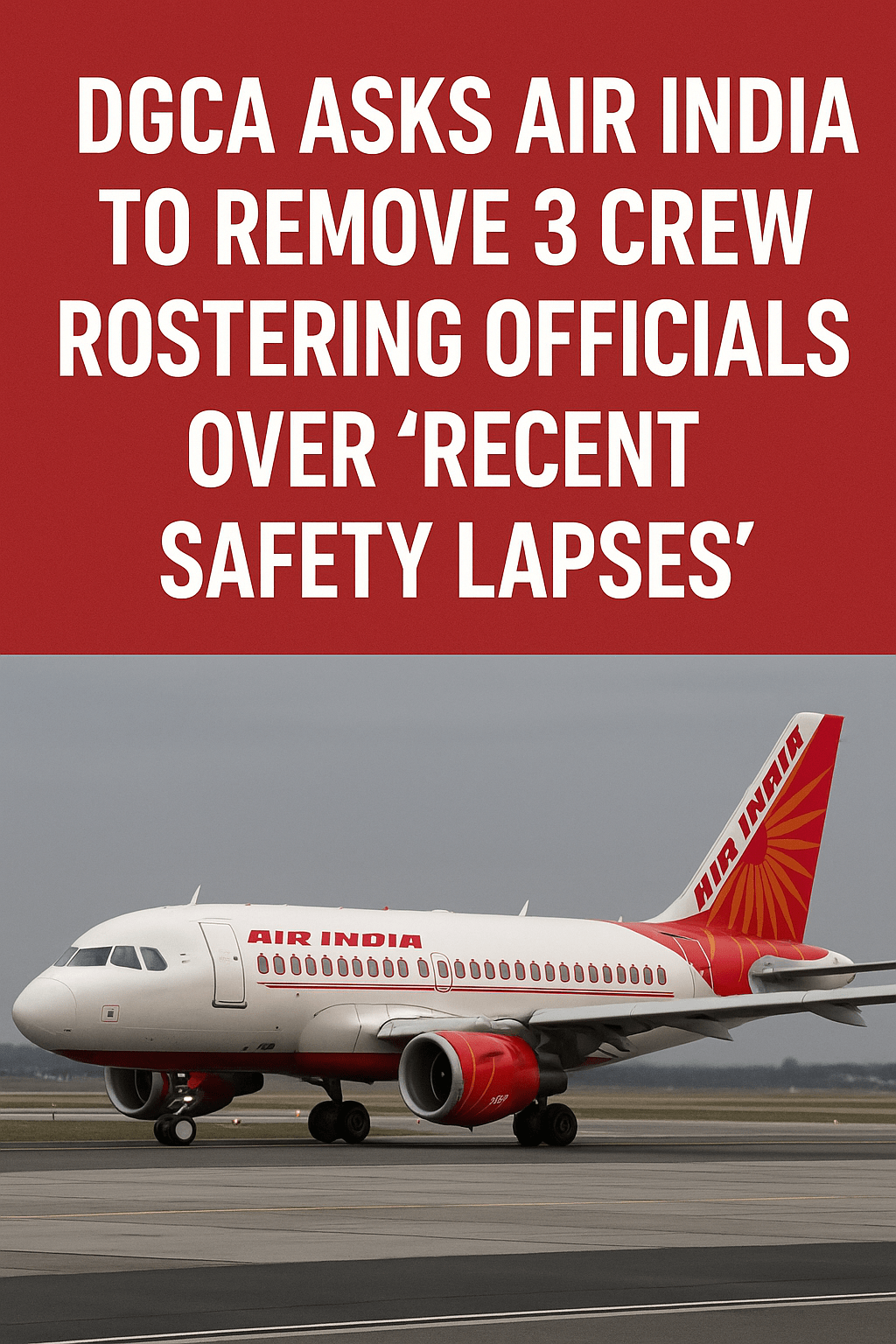✈️ Air India Faces DGCA Heat: 3 Crew Rostering Officials Removed Amid Safety Lapses
meta description:DGCA asks Air India to remove 3 crew rostering officials over ‘recent safety lapses
Introduction
In a significant move to ensure passenger safety and strict compliance with aviation norms, the Directorate General of Civil Aviation (DGCA) has directed Air India to remove three key officials responsible for crew rostering. This step comes after the regulator detected serious shortcomings in how crew schedules were being handled, raising concerns over fatigue management and operational safety.
This blog explains what led to this action, what it means for Air India, and why robust crew management is vital for aviation safety.
Background: What Went Wrong?
Air India, India’s flagship carrier under the Tata Group, has been under DGCA’s scanner for multiple operational issues over recent months. The latest audit reports indicated that crew members were allegedly being assigned flights without sufficient rest periods, in violation of prescribed duty time limitations (DTL) and flight duty period (FDP) norms.
Fatigue among pilots and cabin crew is a well-known hazard in aviation. International and Indian aviation guidelines mandate minimum rest hours to ensure crew are alert and capable of handling flights safely. Ignoring these rules can have serious consequences, jeopardising passenger safety and flight operations.
DGCA’s Strict Stand
According to sources, the DGCA issued a show-cause notice to Air India after finding discrepancies in its internal crew rostering system. The audit pointed out repeat violations of the norms, despite previous warnings. As an immediate corrective action, DGCA has now ordered the removal of three officials directly responsible for managing and approving rosters.
A senior DGCA official said, “Safety cannot be compromised under any circumstances. Crew fatigue poses a direct risk to safe flight operations. Repeated lapses on the part of Air India forced the regulator to intervene strongly.”
Impact on Air India
This order is a wake-up call for Air India’s management. The airline, which is in the middle of a major transformation under the Tata Group, is working hard to regain its lost glory and global reputation. Incidents like these can hamper its ambitious expansion plans and dent passenger confidence.
Industry experts believe that while removing officials is a short-term measure, Air India needs to overhaul its crew management practices. Automation, strict monitoring, and adherence to global best practices in scheduling are necessary to prevent fatigue and maintain safety standards.
Air India’s Response
In response, Air India has said it will fully comply with DGCA’s directives. The airline has assured that it is strengthening its internal audit systems and introducing better rostering software to avoid human errors.
A spokesperson stated, “Air India places utmost priority on passenger and crew safety. We are taking all steps to comply with DGCA’s instructions and ensure that our operations meet the highest safety standards.”
Why Crew Rostering Matters
Crew rostering is more than just drawing up duty charts. It requires a deep understanding of aviation rules, crew fatigue science, and operational efficiency. A well-rested crew is crucial for handling emergencies, making sound decisions during flights, and providing a comfortable travel experience for passengers.
Globally, regulators like the Federal Aviation Administration (FAA) and European Union Aviation Safety Agency (EASA) have strict duty time limits and rest requirements. India’s DGCA follows similar norms to ensure that Indian carriers uphold safety at par with international standards.
What Lies Ahead
This incident highlights the DGCA’s growing vigilance and zero-tolerance approach towards safety violations. Passengers today expect airlines to operate responsibly and regulators to enforce strict oversight.
For Air India, this is both a challenge and an opportunity. By fixing these internal gaps, the airline can reassure flyers of its commitment to safety and operational excellence.
Conclusion
The removal of three crew rostering officials sends a clear message: in aviation, safety is non-negotiable. As Air India works to modernise its systems and strengthen compliance, passengers can hope for safer skies and more reliable journeys.
Stay tuned for more updates on how India’s aviation industry is evolving to meet global safety benchmarks.
